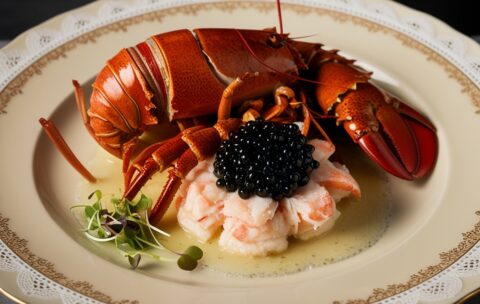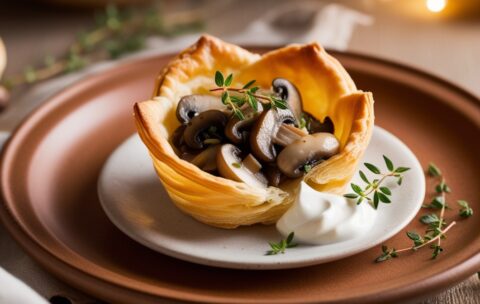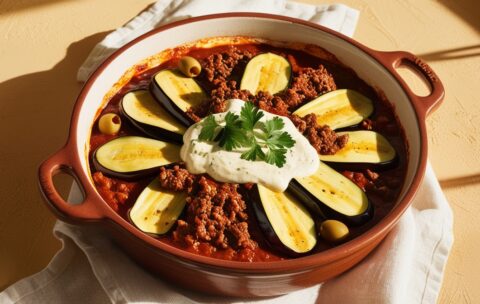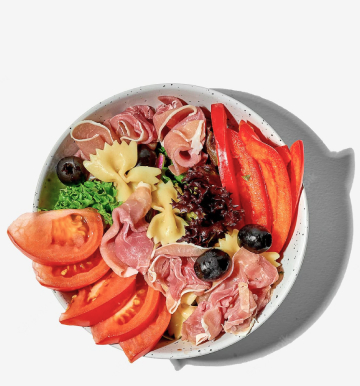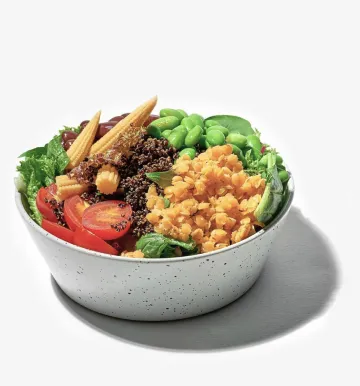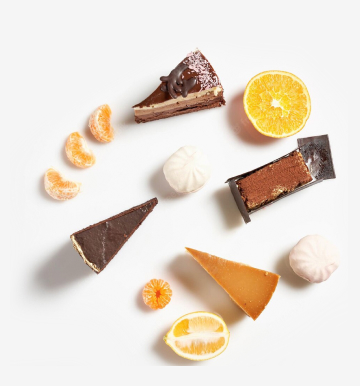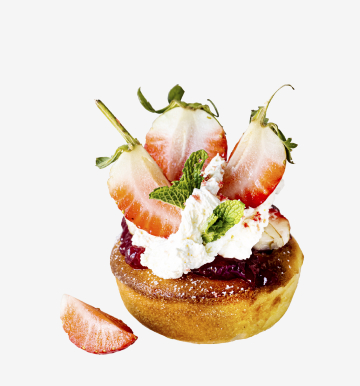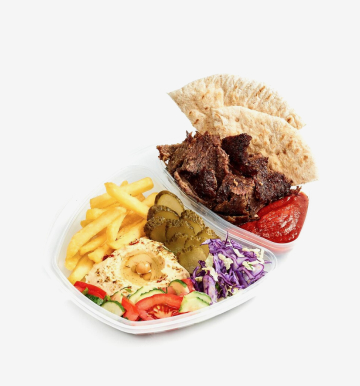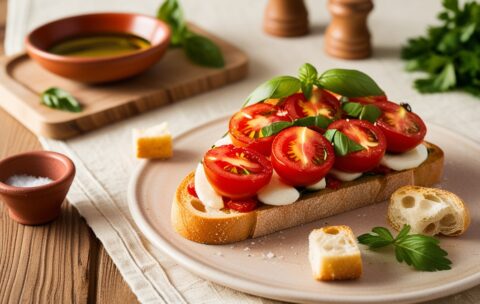Home Update 02
October 4, 2023 2025-06-05 13:04Home Update 02
Become a Home Chef
Learn to cook from scratch and master restaurant-quality meals in your own kitchen. Perfect for beginners and food lovers.

Our Top Courses
We've selected the best programs to get you started. Each course offers step-by-step lessons, hands-on recipes, and guaranteed results — even for beginners.
Mini & Individual Cake Creations
3 Lessons
3 hours
Intermediate
What you'll learn
How to scale down classic cake recipes (sponge, chiffon, pound) for smaller molds and ring cutters
Techniques for creating uniformly shaped mini cakes: using acetate sides, ring molds, and layered inserts
Methods for preparing delicate fillings—fruit compotes, chocolate ganache, and flavored mousses—suited to individual portions
Decorating approaches tailored to small canvases: tempered chocolate accents, buttercream piping, and fresh garnishes
Temperature control and timing secrets that prevent overbaking when working with small molds
Ideas for plating and packaging individual cakes to enhance presentation for events or retail
Crispy Lobster Thermidor with Sturgeon Caviar
3 Lessons
1.3 hour
Intermediate
What you'll learn
How to select and prepare fresh lobster tails for Thermidor
The classic steps to make a velouté-based Thermidor sauce (with cognac, Dijon mustard, and Gruyère)
Techniques for creating a crisp, golden gratin topping using breadcrumbs and cheese
Proper plating and finishing with sturgeon caviar for a refined presentation
Timing and temperature control to achieve perfectly cooked lobster without overcooking
Mojito
3 Lessons
2.3 hours
Intermediate
What you'll learn
How to properly muddle mint and sugar to release essential oils without bruising the leaves.
The ideal ratio of white rum, fresh lime juice, and simple syrup for a perfectly balanced drink.
Techniques for layering ingredients and adding soda water to preserve carbonation.
Tips for selecting the freshest mint varieties and hand-rolling or tearing leaves.
Methods to crush ice at home for that classic “frosty” Mojito texture.
Variations on the traditional recipe, including flavored syrups or fruit additions.
Crispy Onion Rings
2 Lessons
3.8 hours
Intermediate
What you'll learn
How to choose the ideal onion variety (e.g., Vidalia, Walla Walla, or Spanish) for sweetness and structural integrity.
Techniques for slicing uniform rings to ensure even frying without undercooked centers or burnt edges.
Step-by-step instructions for creating a light, airy batter (including tempura-style options) that clings to the onion.
Methods for proper dredging, double-dipping, and maintaining batter consistency to achieve an ultra-crispy crust.
Temperature control in a frying setup—whether using a deep fryer, heavy pot, or cast-iron skillet—and how to monitor oil temperature accurately.
Tips for post-fry handling: draining rings on wire racks, timing seasoning applications, and preventing sogginess when serving.
Variations in seasoning blends (spicy paprika, garlic powder, or Parmesan) to customize flavor profiles.
Mushroom Vol-au-Vent with Sour Cream and Thyme
3 Lessons
1 hour
Intermediate
What you'll learn
How to select and prep a mix of wild mushrooms for maximum flavor (cleaning, slicing)
Techniques for sautéing mushrooms to develop deep, caramelized notes without becoming soggy
Crafting a silky, sour cream–based mushroom sauce (balancing acidity and creaminess)
Proper assembly of homemade or store-bought puff pastry shells to maintain crispness
Finishing touches: infusing fresh thyme, seasoning, and plating for an attractive presentation
Moussaka
3 Lessons
1.1 hour
Intermediate
What you'll learn
How to choose and prepare eggplants (salting/removing bitterness, proper slicing, and roasting) for ideal texture.
Techniques for browning ground lamb or beef, layering in tomato paste, crushed tomatoes, and seasonings (cinnamon, oregano, allspice).
Steps to make a silky-smooth béchamel sauce: roux creation, milk tempering, seasoning, and controlling thickness.
Methods for constructing Moussaka “assembly”—layering eggplant, meat sauce, and béchamel—to ensure even baking.
Guidelines for baking time and temperature so the top turns golden brown without drying out the filling.
Presentation tips: letting Moussaka rest for clean slices, garnishing with chopped parsley, and pairing with Greek salad or crusty bread.
Art of Fondant & Modeling Chocolate
4 Lessons
1.2 hour
Intermediate
What you'll learn
Fondant Fundamentals: How to knead, roll, and cover a cake in smooth fondant; troubleshooting common issues like tearing or cracking.
Color Mixing & Painting: Methods for achieving uniform pastel or vibrant hues using gel, powder, and airbrush techniques; blending shades for gradients and ombré effects.
Modeling Chocolate Preparation: Step-by-step process to make stable, pliable modeling chocolate at home—adjusting ratios for firmness or flexibility.
Sculpting Techniques: Building 3D elements (flowers, animals, figurines) layer by layer; using armature supports for larger models.
Texture & Embellishment: Creating realistic surface details—wood grain, lace patterns, ruffles, and draping—using molds, veiners, embossing tools, and impression mats.
Piping & Detailing: Accenting fondant and modeling chocolate pieces with royal icing, edible beads, and dusting powders to add dimension and realism.
Assembly & Structural Integrity: Best practices for attaching heavy sugar components to cake tiers; internal support systems (dowels, skewers) to ensure stability during transport and display.
Waldorf Salad
5 Lessons
3.3 hours
Intermediate
What you'll learn
Selecting the best apple varieties for texture and flavor
Toasting walnuts to maximize aroma and crunch
Balancing creaminess and acidity in a mayonnaise-yogurt dressing
Incorporating optional mix-ins like grapes or dried cranberries
Plating techniques for an attractive presentation
Duck Breast with Caramelized Apples and Port Wine Sauce
2 Lessons
1.9 hour
Intermediate
What you'll learn
How to score and season duck breast for optimal rendered fat and crisp skin
Techniques for safely rendering duck fat in a cold pan and achieving uniform sear
Steps to caramelize apple wedges using butter, brown sugar, and a pinch of cinnamon
Methods for constructing a port wine reduction with shallots, herbs, and a splash of balsamic
Timing coordination to rest the duck and serve apples and sauce at the perfect temperature
Decadent Chocolate-Drizzled Cake Pops
4 Lessons
5.2 hours
Intermediate
What you'll learn
How to bake a moist cake base optimized for cake pops
Techniques for crumbling and mixing cake with fillings for consistent texture
Molding and chilling methods to form even, crack-free spheres
Proper chocolate tempering for glossy, snap-worthy coatings
Drizzling and decoration tips: two-tone drizzles, sprinkles, and edible embellishments
Storage and transport strategies to keep cake pops fresh and intact
Choose Your Category
Our courses are grouped by category to help you find what suits your taste. From quick dinners to gourmet desserts — start with what inspires you.



About Our Culinary Journey
We are passionate about bringing the joy of cooking to everyone. Our mission is to empower food lovers with the skills and confidence to create delicious meals at home. With expert chefs, innovative teaching methods, and a love for culinary arts, we’re here to inspire your kitchen adventures.
Our Commitment
Everyone can cook well. Our courses offer clear guidance to ensure success for all skill levels.
Community Focus
Join our foodie community. Share creations and grow in a supportive environment.
Why Choose Our Culinary Courses?
Our courses are designed to make cooking fun, accessible, and inspiring. Whether you're a beginner or a seasoned cook, our unique features will help you elevate your skills and unleash your culinary creativity.

Expert Instructors
Learn from world-class chefs with years of experience. Our instructors guide you step-by-step, sharing professional tips.

Flexible Learning
Study at your own pace, anytime, anywhere. Our online platform offers 24/7 access to lessons, so you can fit cooking into your busy schedule.

Hands-On Recipes
Practice with real recipes designed for all skill levels. From classic dishes to modern creations, you’ll master meals that impress every time.
What Our
Students Say
Hear from our happy students who have transformed their cooking skills with our courses. From beginners to seasoned cooks, our community loves sharing their success stories!
"This course completely changed how I cook! The instructors are so knowledgeable, and the lessons are easy to follow. I’m now confident making dishes I never thought I could."
Emma Johnson
"I love the flexibility of these courses. I can learn at my own pace and still feel supported. The recipes are amazing, and I’ve impressed my family with new dishes!"
Michael Chen
"The vegan cooking course was a game-changer for me. I learned so many creative ways to make plant-based meals that taste incredible. Highly recommend!"
Sophie Martinez
"The hands-on approach made learning so fun! I went from burning toast to baking artisan bread in weeks. Thank you for such an inspiring experience!"
James Carter
Discover Our Newest Culinary Courses
Get inspired by our latest additions! These exciting courses bring fresh ideas and techniques to your kitchen, perfect for food lovers eager to try something new. Browse our carousel to find your next culinary adventure.
Blooming Gelatin Basics
2 Lessons
2.6 hours
Intermediate
What you'll learn
The difference between naked and semi-naked finishes
How to achieve even cake layers with minimal frosting
Techniques for crumb coating and thin buttercream application
Decorating ideas: fresh flowers, fruit, and simple drizzles
Tips for maintaining stability despite lighter frosting
Coq au Vin
3 Lessons
2.3 hours
Intermediate
What you'll learn
Ingredient Selection & Preparation:
How to choose the right cut of chicken (whole, thighs, or a combination) and select complementary wine (e.g., Burgundy Pinot Noir or alternative regional varieties).
Proper techniques for trimming, seasoning, and preparing lardons, mushrooms, and root vegetables.
Braising Fundamentals:
The importance of searing chicken pieces for color and flavor development.
How to deglaze a Dutch oven or heavy-bottomed casserole with red wine, preserving all the fond (browned bits) on the pan bottom.
Flavor-Building Strategies:
Layering aromatics—onion, garlic, carrot, thyme, and bay leaf—to create depth.
Controlling heat and timing for a slow, gentle simmer that yields tender meat and a concentrated sauce.
Sauce Reduction & Finishing Touches:
Techniques for skimming excess fat and reducing the braising liquid to a velvety consistency.
Tips for adding mushrooms and optional garnishes (parsley, fresh herbs) at the final stage for maximum aroma and texture.
Plating & Serving Suggestions:
How to present Coq au Vin with traditional accompaniments (e.g., buttered noodles, mashed potatoes, crusty bread).
Strategies for reheating or holding the dish without sacrificing quality, making it ideal for dinner parties.
Apple Strudel
4 Lessons
4.3 hours
Intermediate
What you'll learn
How to prepare and knead traditional strudel dough, achieving elasticity without gluten overdevelopment.
Techniques for resting and stretching dough until it is paper-thin.
How to make a perfectly balanced apple filling: selecting the right apple varieties, mixing sugar, spices, raisins, and breadcrumbs.
Methods for brushing with butter and rolling without tearing dough.
Baking tips to ensure a golden, crisp crust and tender, aromatic interior.
Variations: nut-studded apple strudel, cherry-apple combination, nut-free options for allergies.
Simple plating and serving suggestions—warm from the oven with vanilla sauce, whipped cream, or a dusting of powdered sugar.
French Gateau & Entremet Principles
2 Lessons
1.3 hour
Intermediate
What you'll learn
Fundamental Structures: How to build entremets layer by layer—choosing and baking the right sponge (génoise, Joconde, biscuit cuillère), creating thin croustillant layers, and assembling mousse and bavarois tiers for height and stability.
Texture & Temperature Management: Techniques to ensure each component sets properly (e.g., mousse firmness, gelatin bloom, glaze viscosity) and how to keep layers distinct without bleeding.
Flavor Profiling & Balance: Pairing fruit purées, chocolate, nuts, and creams to achieve harmonious taste profiles. Understanding acidity, sweetness, and how to cut richness with complementary elements (fruit inserts, crunchy praline).
Advanced Finishing Techniques: Preparing and applying a smooth mirror glaze, torching velour sprays, using transfer sheets, and piping delicate decorations. Learning how to achieve a polished, professional look every time.
Assembly & Troubleshooting: Best practices for unmolding, repositioning, and storing entremets. Identifying and correcting common issues—sogginess, collapsed layers, uneven glazes.
Presentation & Plating: Strategies for cutting perfectly even slices, garnishing with textures (tuile, cocoa nibs, spun sugar), and arranging plated portions so they look as good as they taste.
Caprese Salad
6 Lessons
2.3 hours
Intermediate
What you'll learn
How to select perfectly ripe tomatoes and fresh mozzarella
Techniques for uniform slicing and layering
Balancing flavors with olive oil, balsamic vinegar, salt, and pepper
Creative garnishes and presentation ideas
Tips for make-ahead prep without sacrificing freshness
Vegan & Gluten-Free Cake Innovations
3 Lessons
1.5 hour
Intermediate
What you'll learn
Flour Blends & Ratios: How to create balanced gluten-free flour mixes (almond, oat, rice, sorghum) and adjust for different cake styles (sponges, pound cakes, chiffon).
Binder Techniques: Use flaxseed meal, chia gel, and aquafaba as egg replacers to provide lift and cohesion; troubleshoot sticky or crumbly batters.
Moisture Control: Incorporate nondairy milks (almond, oat, coconut), fruit purées, and oil ratios to maintain tenderness without a gummy crumb.
Sweetener Alternatives: Work with maple syrup, coconut sugar, and date paste; understand how liquid versus granulated sweeteners affect texture and browning.
Flavor Innovations: Develop unique cake profiles—matcha-coconut layer, cacao-beet marble, citrus-herb infusion—using natural colorants and extracts.
Frosting & Filling Adaptations: Prepare stabilized coconut whipped cream, aquafaba meringue buttercream, and avocado-chocolate ganache; learn to pipe and decorate without dairy.
Baking Adjustments: Modify oven temperatures, bake times, and pan preparations for even rise and minimal collapse in vegan/gluten-free batters.
Troubleshooting: Identify and fix issues like dense crumb, dryness, or collapse; use gentle folding, resting times, and moisture tests to ensure success.
Crispy Lobster Thermidor with Sturgeon Caviar
3 Lessons
1.3 hour
Intermediate
What you'll learn
How to select and prepare fresh lobster tails for Thermidor
The classic steps to make a velouté-based Thermidor sauce (with cognac, Dijon mustard, and Gruyère)
Techniques for creating a crisp, golden gratin topping using breadcrumbs and cheese
Proper plating and finishing with sturgeon caviar for a refined presentation
Timing and temperature control to achieve perfectly cooked lobster without overcooking
Bruschetta al Pomodoro
2 Lessons
3.3 hours
Intermediate
What you'll learn
How to select and prepare the ripest, most flavorful tomatoes for maximum sweetness and juiciness.
Proper technique for toasting bread to achieve a crisp exterior and tender crumb.
Balancing acidity, sweetness, and texture in a simple tomato-garlic-basil mixture.
Chopping methods to ensure uniform tomato pieces and even seasoning distribution.
Infusing olive oil with garlic and herbs to enhance overall flavor.
Presentation tips for arranging bruschetta on a platter or serving board.
Chocolate Fondant
3 Lessons
1 hour
Intermediate
What you'll learn
Ingredient Selection & Preparation: How to choose high-quality chocolate, cocoa powder, and eggs; correctly measure and prepare ingredients for optimal texture.
Temperature Management: Techniques for melting chocolate and butter to avoid seizing or burning, including bain-marie and microwave methods.
Batter Consistency: How to achieve the right balance between a custard-like batter and a stable cake structure so that the exterior sets while the interior remains molten.
Molding & Baking: Proper greasing, flouring, or buttering of molds; timing and oven temperature adjustments to guarantee a uniform rise without overcooking.
Plating & Presentation: Tips for unmolding the fondant cleanly, garnishing ideas (e.g., dusted cocoa, fresh berries, ice cream pairing), and creating an elegant plating design.
Troubleshooting Common Issues: Solutions for common pitfalls—such as undercooked centers that are too runny, overbaked cakes with no molten core, or cracked exteriors.
Loaded Nachos
5 Lessons
2.6 hours
Intermediate
What you'll learn
Chip Selection & Prep: How to choose sturdy yet crispy tortilla chips to prevent sogginess under heavy toppings.
Protein Options: Techniques for seasoning and cooking ground beef, shredded chicken, or black beans to use as a hearty nacho base.
Cheese Melting Methods: Tips for pairing cheeses (cheddar, Monterey Jack, Pepper Jack) and getting an even melt under the broiler or in the oven.
Layering Strategies: The optimal sequence for chips, beans, cheeses, proteins, and vegetables so each bite has balanced texture—no more soggy bottoms or cold patches.
Homemade Toppings: Quick recipes for pico de gallo, guacamole, and sour cream drizzle, plus how to pickle jalapeños or shred lettuce for freshness.
Garnishing & Presentation: Final touches—cilantro, green onions, lime wedges, and diced tomatoes—to turn a simple tray into an Instagram-worthy platter.
Serving & Reheating: Best practices for keeping loaded nachos warm, how to reheat leftovers without losing crispiness, and portion guidance for parties of various sizes.


